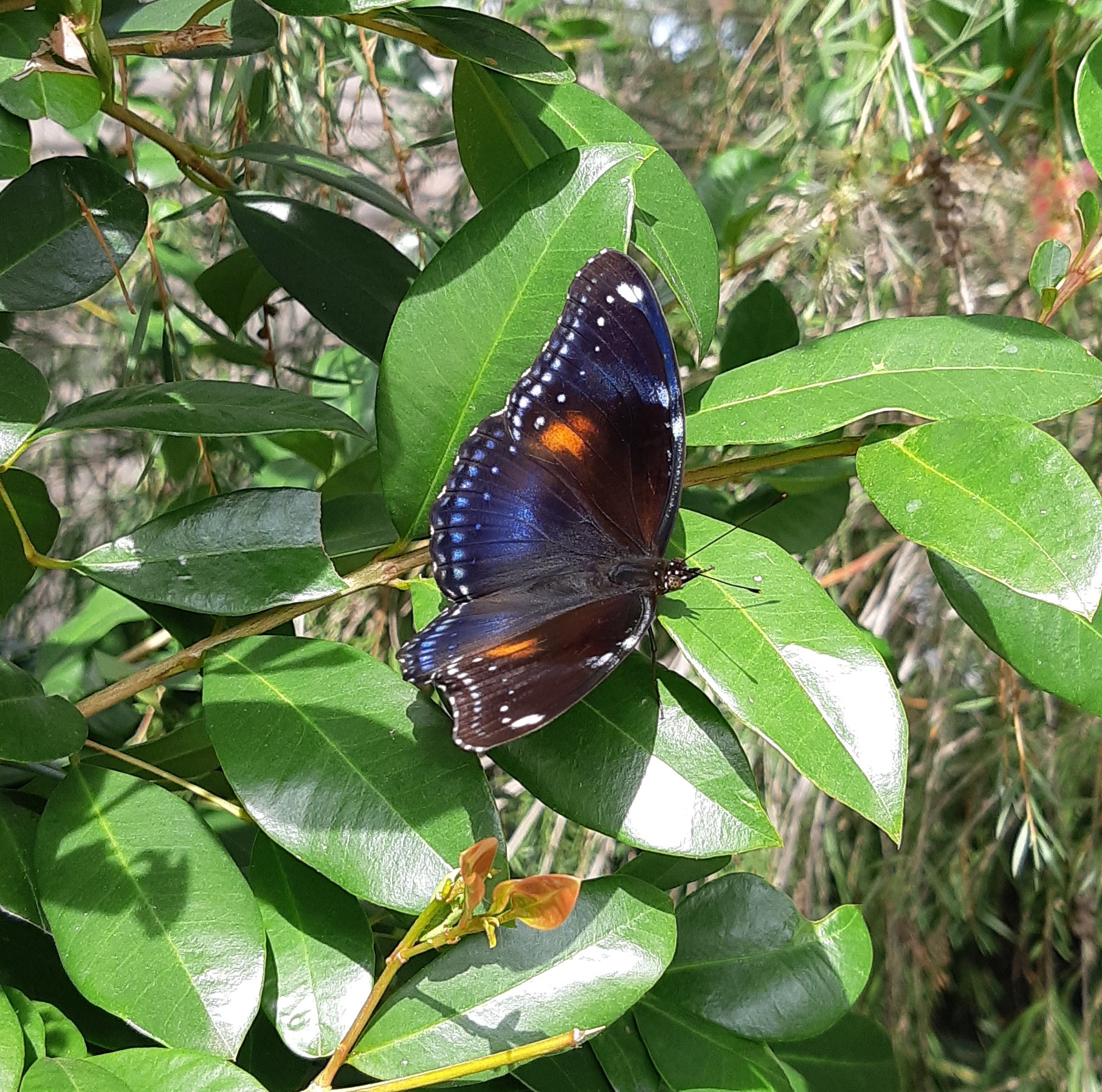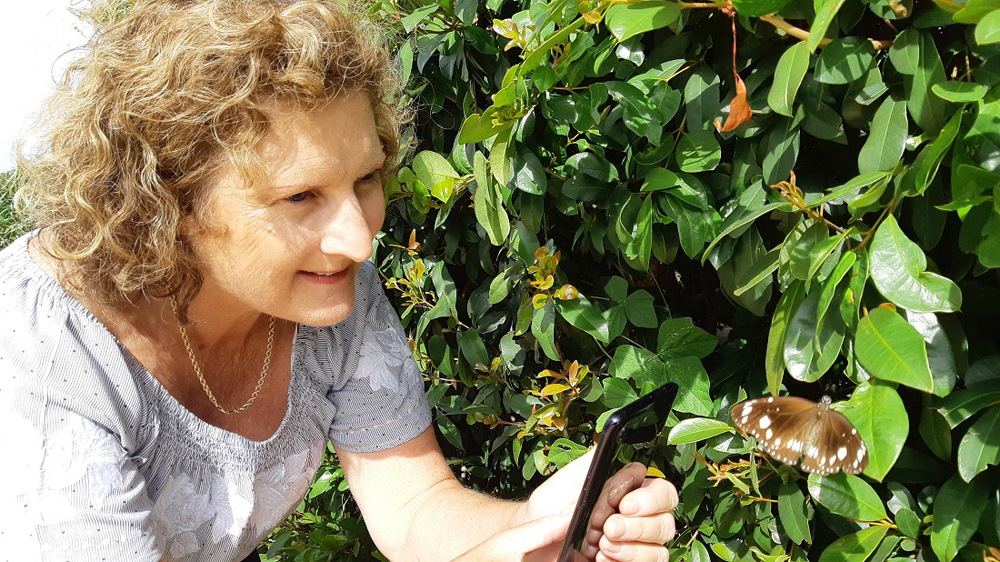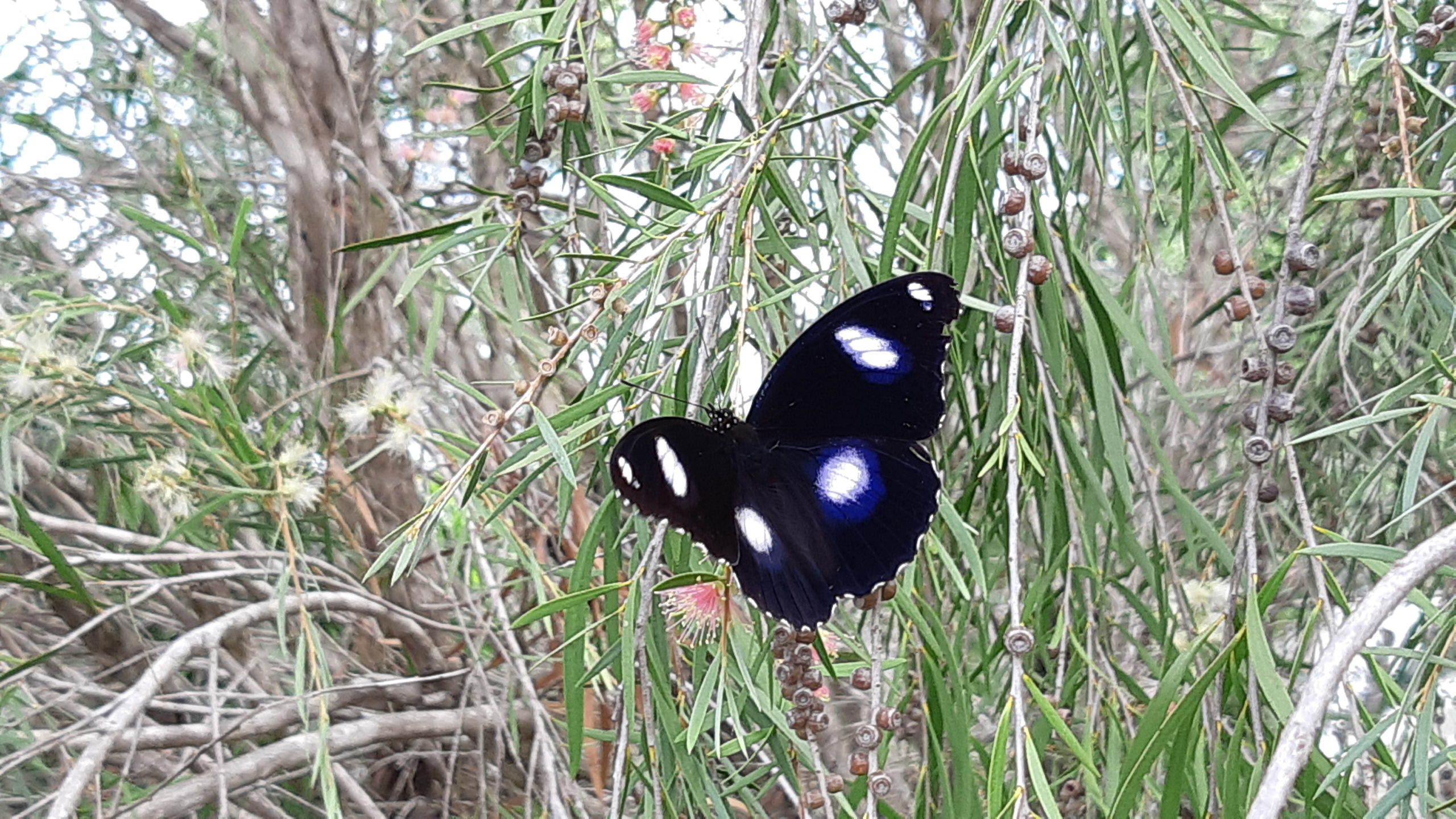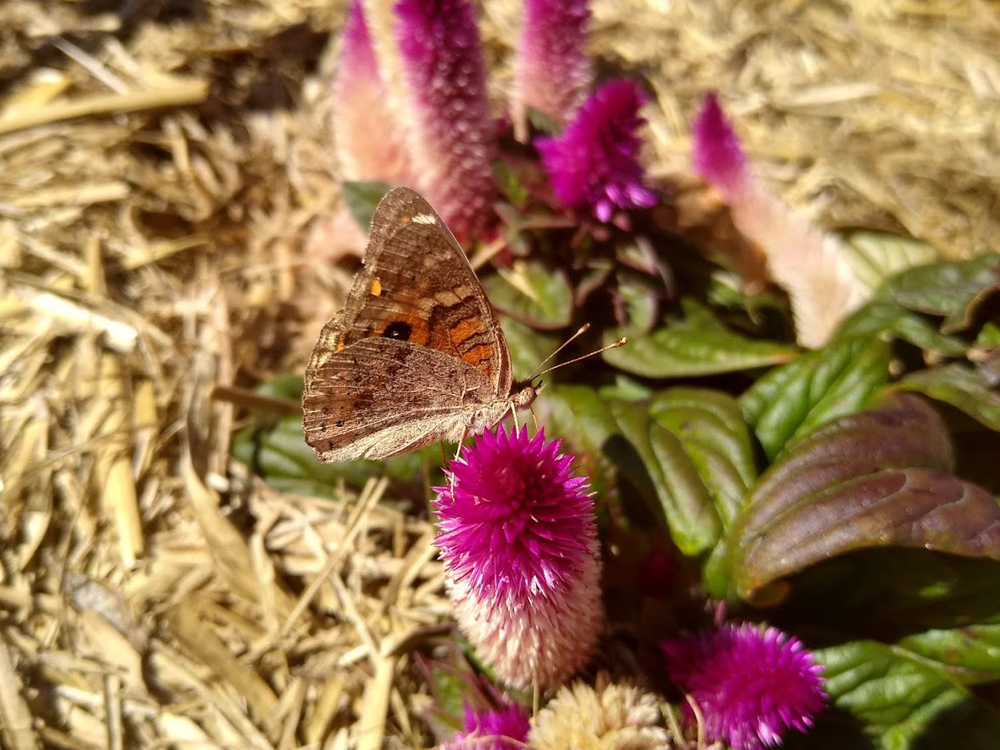Ipswich residents have seen an influx of fluttering critters of late, as the region experiences the tail end of south-east Queensland’s butterfly boom.
Springfield Lakes Nature Care (SLNC) president Luise Manning recently spotted some of the pretty insects in her garden.
“I became fascinated by the amount of butterflies that were attracted to a native tree that was flowering in my front yard,” she said.
Ms Manning then encouraged others in the community to ‘Show off their butterflies’.
“I put a call out to local members and residents who follow our SLNC Facebook page to photograph the beautiful insects and share these photos with us,” she said.
“The thing I like about butterflies is that you can get a good close up photo with a digital camera or smartphone as long as you move slowly whereas birds will fly off as soon as you come too close.

Female Varied Eggfly. Image: Dr David Manning
“Now we’ve got a great collection of people’s lovely butterfly photos.”

Luise Manning taking a photo of a Spotted Crow butterfly. Image: Dr David Manning
Ms Manning said the butterfly boom couldn’t have come at a better time, with the community taking part in the City Nature Challenge (24 to 27 April) this weekend.
“We can still engage with the environment and head outdoors to take observations of wild flora and fauna while following health regulations,” Ms Manning said.
“Getting involved in the City Nature Challenge is the perfect way to do this.
“Knowing what species are in our city and where they can be found helps scientists study and protect them.
“The City Nature Challenge encourages the community to work together to find and photograph nature in your suburb.
“By participating, you’re learning more about your local flora and fauna, but you’re also making Ipswich a better place for you and the wildlife around us.
“Remember even if we can’t leave home, we can still record what we find in our back or front yards.
Want to get involved in the City Nature Challenge? Here’s how.
Download the iNaturalist app from the AppStore or Google Play and start sharing your observations.
You can then get feedback from actual scientists, experts, and other naturalists.
“You might be surprised by what’s in your backyard.”
In a recent blog post, senior curator of insects at the Queensland Museum Dr Chris Burwell said the recent weather was responsible for the butterfly boom.
“The recent weather has been ideal for butterfly breeding,” he said.
“Drought conditions throughout spring and summer were followed by a very wet February.
“Plants flourished after the drought breaking rains and this was great for butterflies whose caterpillars munch of fresh leaves.”

Image: Dr David Manning
Each year, butterflies are more common in the warmer and wetter months, but this year has been particularly exceptional and Dr Burnwell has a theory as to why.
“Not only did the rain favour more butterflies, but so did the drought,” he said.
“At the end of the drought butterfly numbers were low, but the same was true for their parasites and predators.
“Growing up is a very risky business for butterflies; the eggs and caterpillars are parasite by wasps and flies and eaten by all manner of insects, spiders and birds.
“When the drought broke the butterflies got the jump on their natural enemies and many more caterpillars survived to turn into beautiful butterflies.”



I’m really enjoying being able to read these updates on how our City is being managed now , as well as the interesting activities .